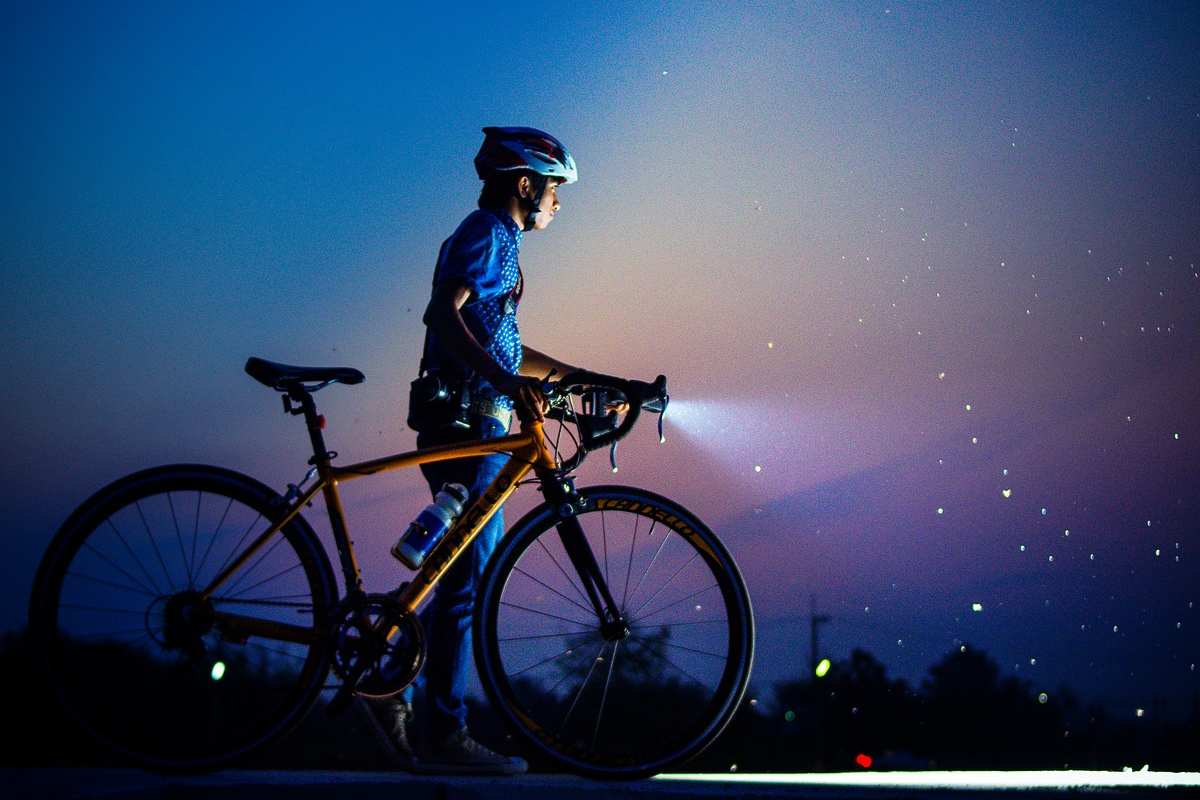Cyclists can’t rely on it being broad daylight to highlight their presence. From being a smaller visual compared to other road users, to shadows on the road, to blending into the surroundings, visibility for cyclists isn’t a given during the day. A dark coloured bike end-on may blend into the surrounding trees, a green helmet difficult to see against a field in the background. But a flashing daytime light? That’s much harder to miss.
Staying safe on the roads
According to ROSPA’s Road Safety Factsheet, the most dangerous hours statistically for a cyclist are between 08:00-09:00 and 15:00–18:00 during weekdays. And yet, despite the majority of these hours falling during daytime, it is only a legal requirement to wear visibility lights on a bicycle at night.
Furthermore, 80 per cent of cycling accidents happen during daylight hours, and more accidents occur during spring and summer months, even with longer, lighter daytime hours. Though night time cycling accidents are more likely to be fatal, there is certainly a case to be made for having lights on your bike during the day too.
Expecting the unexpected simply isn’t human
It’s easy to say drivers and cyclists should simply ‘pay more attention’. In some part, this holds water, but in other ways, the problem is much deeper than that. An article from Cycling Tips noted that unexpected elements are, by their very nature, processed poorly by humans. When performing a familiar behaviour, people tend to rely mainly on expectations. An unexpected cyclist can therefore go unnoticed.
Cycling at night safely
It is illegal to ride a bike along a public road in the dark without some form of lighting or reflector. The law states that a night-time cyclist needs to have lights and reflectors between sunset and sunrise. However, as previously discussed, it is prudent to have a daytime light as well in order to increase visibility during the day.
The law also notes cyclists don’t need these lights while stationary or pushing a bike along a roadside. But again, in terms of remaining as clear and visible as possible for other road users, it is certainly advised.
Obviously, the lights and reflectors must be in full working condition and free of dirt. Be sure to check them over after every ride.
Different types of visibility lights and their uses
Cycling UK outlines the necessary placements of reflectors and visibility lights as follows:
| Front | Rear | Pedals | Number | Colour | Position | Markings | |
|---|---|---|---|---|---|---|---|
| Lights | ✔ | ✔ | ✖ | Front light — minimum of one. Rear light — one. |
Front light — white. Rear light — red. |
Front light — centrally or offside to the right of the bike. 1500mm from ground max. Rear light — centrally or offside to the right of the bike. Between 350–1500mm from ground. |
Front light — conforming to BS6102/3 or EC equivalent. Rear light — conforming to BS3648, or BS6102/3, or EC equivalent. |
| Reflectors | ✖ | ✔ | ✔ | Rear reflector — one. Pedal reflector — four. |
Rear reflector — red. Pedal reflector — amber. |
Rear reflector — centrally or off to the right-hand side of the bike. Between 250–900mm from ground. Pedal reflector — front and back of each pedal. |
Rear reflector — conforming to BS6102/2 or equivalent. Pedal reflector — conforming to BS6102/2 or equivalent. |
Different types of visibility lights and their uses
According to The Cycling Experts, there are three main types of lights for cyclists to be aware of:
- Head lights are mounted at the front and help you to see ahead, of course. But they also function to help other road users see you.
- Rear lights are on the back on the back and can be set to a steady beam or blinking light. Blinking lights tend to be recommended due to their effect in drawing attention.
- Helmet lights can be fixed to cycle helmets as an optional accessory. They should not be relied upon as the only lighting on your bike ride. They can be useful as the cyclist is able to direct the light quickly.
Sources:
https://www.cyclinguk.org/cyclists-library/regulations/lighting-regulations
https://www.thecyclingexperts.co.uk/get-cycling/bike-lights-guide/
https://cyclingtips.com/2017/02/see-seen-every-cyclist-needs-know-daytime-running-lights/
https://www.rospa.com/rospaweb/docs/advice-services/road-safety/cyclists/cycling-accidents-factsheet.pdf
You are reading Cycling day or night: the importance of wearing visibility lights


